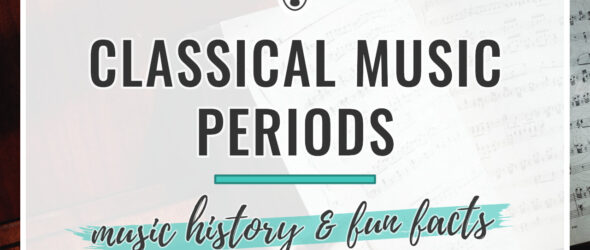When you’re diving into violin music, you’ll encounter all kinds of works from different classical music periods, each with its own sound and style. Understanding when these periods took place and what made their music so interesting will help you become a better violinist.
Today, we’ll take a deep dive into each classical music era. You’ll come out of it with a much clearer picture of how music has evolved over the ages. Let’s time-travel through some of the best music!
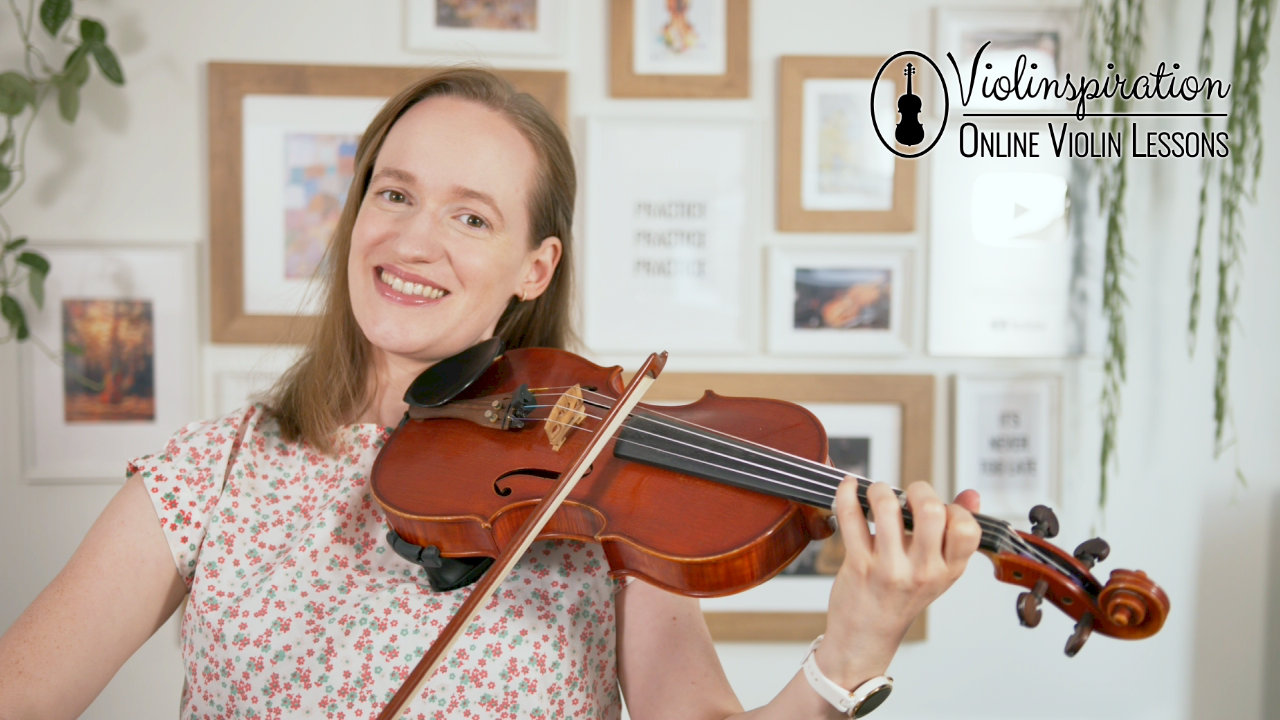
Before We Begin…
When we talk about the eras of classical music, we’ll be focusing on Western music. Music traditions from parts of the world outside of Europe and the United States were and still are very different. Their harmonies and instruments are different from ours, making their music theory and music history different from Western classical music.
In addition, when we talk about classical music with a lowercase c, we refer to this style of Western art music. The Classical period of music (1750-1820) is referred to with a capital C: Classical music. The big C indicated that the music came from that exact period of time.
The Classical Music Periods
Our music history lesson begins in the 400s and will span all the way to today. Let’s dive in era by era to learn the history of classical music.
Medieval Period
Circa 476-1400
Our musical journey today will begin in the Medieval era, with early music. We consider the fall of the Roman Empire to be the start of this era in both general and music history.
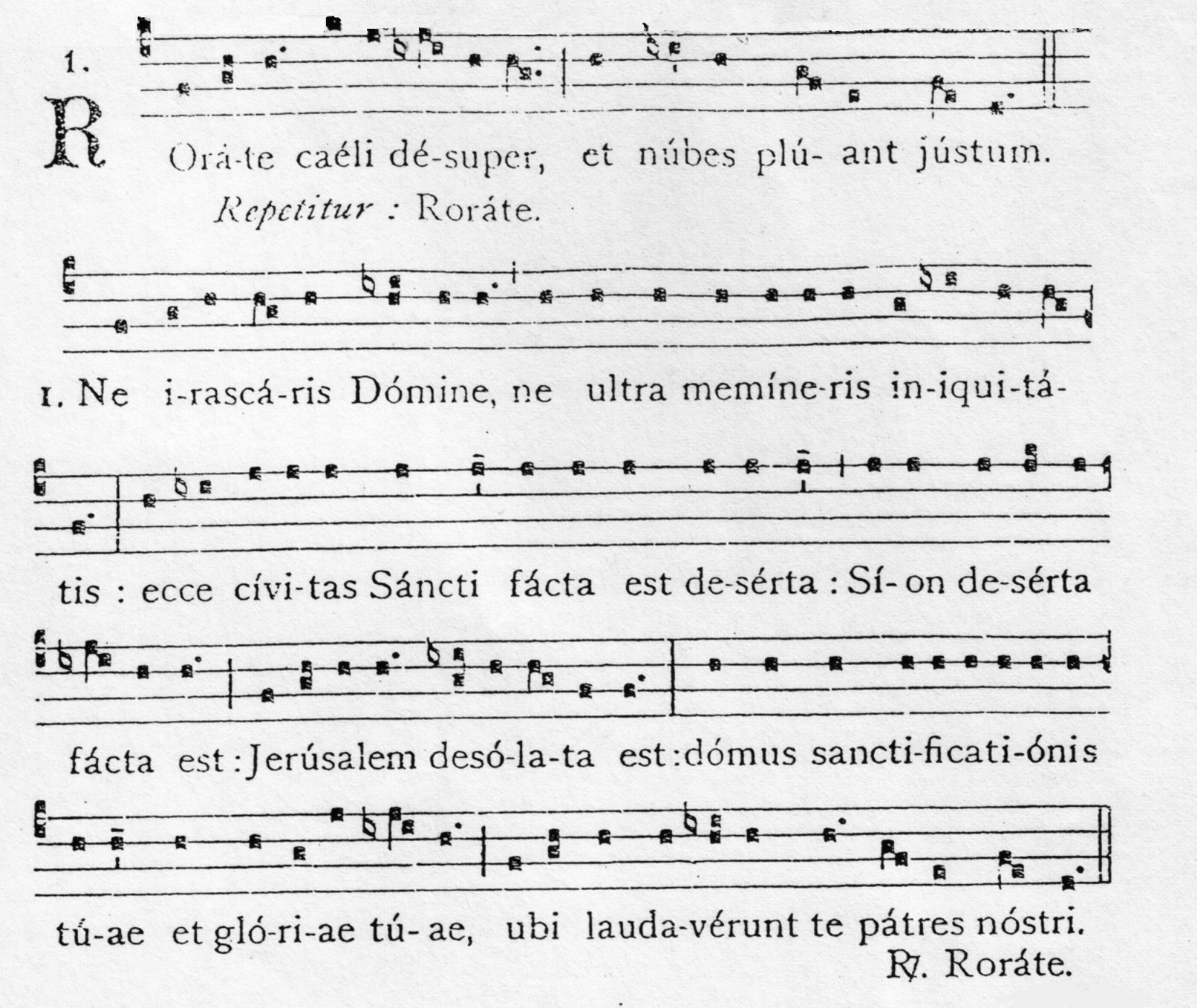
In the Medieval period, most music was sacred: written for the church. Gregorian chant developed in the 9th century and subsequently spread throughout Europe. Chants are an example of monophony: a texture of music where all voices sing the same melody line. This was the prominent form within this era of music.
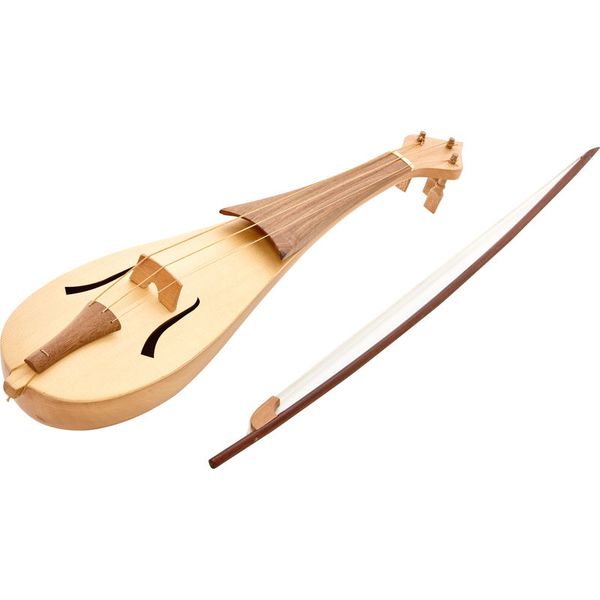
At this point in history, vocal music was the most common, mostly because music was a form of worship. There were, however, many advancements made in the development of musical instruments. String instruments at the time included the rebec and the vielle. If you’d like, you can learn more about early instruments in The History of the Violin.
In the Medieval era, music was notated with something called ligatures. These ligatures didn’t show any rhythms. In the 11th century, composer and theorist Guido de Arazzo created a four-line staff similar to our five-line staff. Through the rest of the era, other composers began changing musical notation into something that looked more like what we see today.
Famous Composers of the Era
Guido de Arazzo, Hildegard von Bingen, Léonin, Pérotin
Renaissance Period
Circa 1400-1600
The Renaissance era of music took place from around 1400 to 1600, a bit later than the Renaissance era of art. The invention of the printing press in 1439 helped uniform musical notation and spread music to new areas.
Renaissance music was more experimental than Medieval music. Polyphony, a texture that includes multiple melody lines playing at once, was born; but it was quickly discouraged by the Catholic Church.
In an effort to innovate music away from polyphony, Italian composer Giovanni Pierluigi da Palestrina created a counterpoint: two or more musical parts that interlock and provide harmony to one another. Harmonic cadences became a main focus, and in the Late Renaissance period, music became more embellished with ornamentation and suspension.
While choral music was still the most popular, more composers began writing some instrumental music as there were more standardized instruments at this time like the harpsichord, viol, lute, and guitar.
Renaissance means “rebirth”, and you can see that this period of music was full of changes in the form!
Famous Composers of the Time
Guillaume Dufay, Josquin des Prez, Giovanni Pierluigi da Palestrina
Baroque Period
Circa 1600-1750
The Baroque era was the first period that defined the sound of Western classical music. Instrumental and secular music became the forefront, and composers began developing the forms and textures that we hear the most today.
The music of the Baroque era began in Italy, with composers like Alessandro Scarlatti and Antonio Vivaldi. You may recognize Vivaldi’s name from his very famous violin concerto, The Four Seasons. Vivaldi actually wrote over 230 works for the violin!
The most famous Baroque-era composer by far is Johann Sebastian Bach. He was a German organ player who wrote both sacred and secular music. Bach expanded counterpoint and harmony in incredible ways and created some of the most loved music of all time. His popular works include music for solo string instruments: Six Violin Sonatas and Partitas, the Six Cello Suites, and keyboard music: The Well-Tempered Klavier.
A huge characteristic of Baroque music is the start of emphasizing dynamics. Finally, with the invention of the pianoforte, most instruments of the time could perform dynamics (changing volumes). Composers made great use of this newer technique and added echo-like effects to their music. More ornamentations like trills and turns were also added to Baroque music.
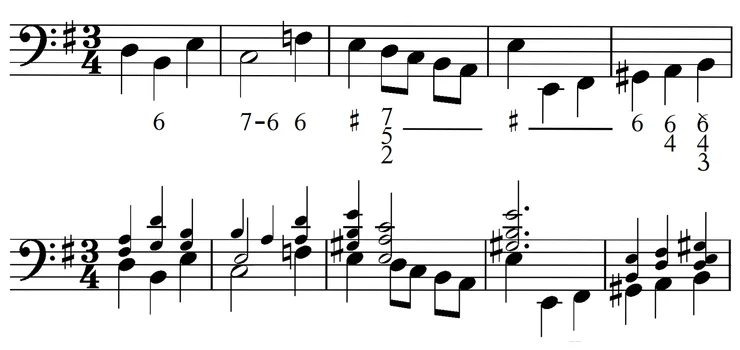
Basso continuo became a popular form of notated music. Basso continuo is a single melodic line for the lowest instrument or voice in an ensemble and generally includes numbers below the staff to show the musician what notes of a chord to add to each written-out note in the music. Baroque music is where the bass line in music developed.
The Baroque era is also where the Common Practice Period of music began. This period spans from around 1600 to 1910 and refers to Western art music that follows the style and rules of music theory that were developed beginning in the 1600s. As you’ll see when we get to the 20th century, more modern composers disregarded the “rules” and set out to make music that sounds entirely different!
Famous Composers of the Baroque Era
Johann Sebastian Bach, Antonio Vivaldi, George Frideric Handel, Georg Philipp Telemann, Henry Purcell, Jean-Baptiste Lully, Alessandro Scarlatti
Classical Period
Circa 1750-1820
The Classical period was a short one, but one of the most impactful for classical music (little c) as a whole.
This era of music was based on the styles of the composers who lived and worked in Vienna, like Mozart, Haydn, and even Beethoven and Schubert, although the latter two bridged the gap into the next era of music, Romanticism. Some call this group of composers the Viennese School because they knew each other and wrote music in a similar style.
The orchestra started to look and sound more like the ensemble as we know it today, as wind instruments and brass instruments alike became more uniform and were expanded to play a wider range of notes. The harpsichord and organ were mainly replaced by the pianoforte, which had the ability to play dynamics, unlike the harpsichord.
Music from the Classical period has an emphasis on form, balanced phrases, and perfect harmony. Where the music from the Baroque period might’ve sounded more experimental with new forms and imperfect phrases, Classical era music is more “pure” and “perfect” in its form and sound.
New sorts of ensembles and musical forms were created in this period. Solo concertos became more popular than the concerto grosso (group concertos) of the Baroque era, and the string quartet was born. Haydn in particular wrote over 100 string quartets and set the standard for the new ensemble.
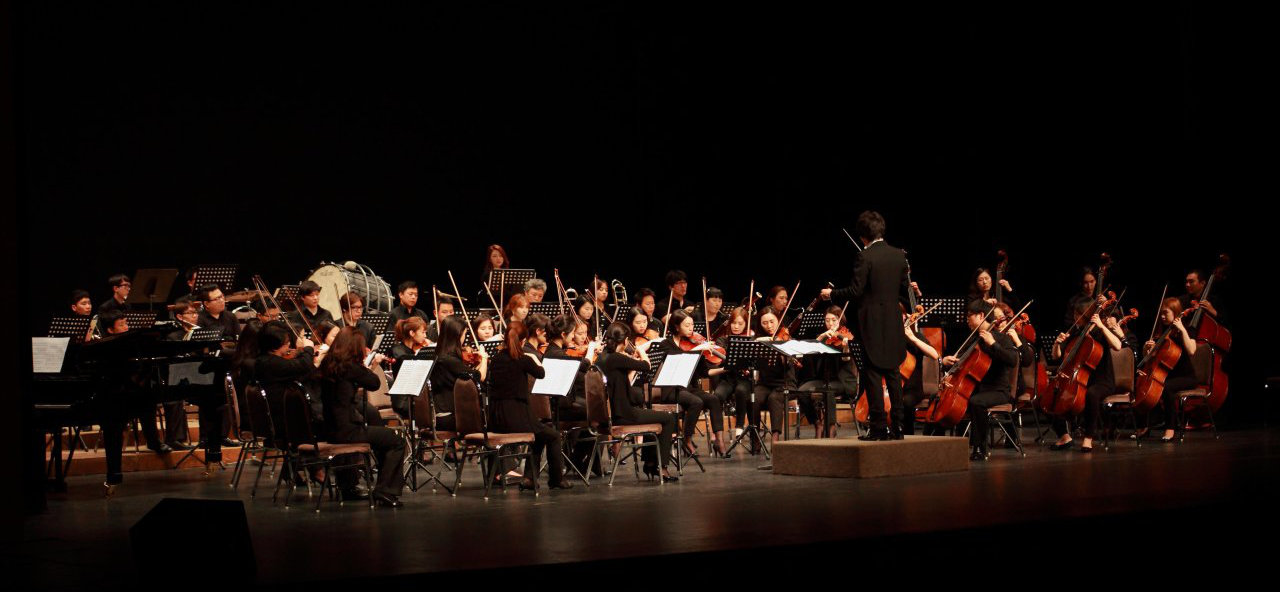
Symphonies began to take shape in the four-movement form that we know them to be today. Haydn also wrote over 100 symphonies throughout his life, and Mozart wrote over 50.
Wolfgang Amadeus Mozart is of course the most iconic Classical era composer. He was a child prodigy who wrote over 600 works and played the violin, viola, and various keyboard instruments. Learn all about Mozart’s life and musical works here!
Ludwig van Beethoven was another very famous Classical era composer, although his music bridges the gap between the traditions of the Classical period and the new styles of the Romantic era. Beethoven studied with Haydn, so his early compositions sound fairly similar to his teacher’s music. As he grew older and began losing his hearing, his musical style evolved to become more experimental, with more complex harmonies and intense themes.
Important Composers of the Classical Period
Wolfgang Amadeus Mozart, Franz Joseph Haydn, Joseph Bologne Chevalier de Saint-Georges, Luigi Boccherini, Christoph Willibald Gluck, and the early works of Beethoven and Schubert
Romantic Period
Circa 1820-1900
The Romantic era is one of the most beloved periods of music, where music for symphony orchestras really blossomed. Composers focused more on chromatic lines and less on following the strict harmony and form rules that were set years prior. Romantic music is generally regarded as more expansive and emotional than the music created in the Baroque and Classical eras.
Within this period, composers argued whether or not music should tell a specific, set story. Johannes Brahms, one of the most famous German composers of the time, believed that audiences should enjoy music for what it is: simply music. He published music without sharing any themes or stories he had in mind while writing it. This is called absolute music. Other composers like Franz Liszt and Richard Wagner preferred writing and sharing programmatic music: music that tells an explicit story or narrative. These two disparate opinions made for different, yet equally interesting types of Romantic music.
Berlioz Symphonie Fantastique is a great example of program music: a work that tells a specific story.
Many composers of this era were inspired by nature, poetry, and pushed the boundaries of classical music. Non-standard instruments like the viola and double bass were given more solo music and opportunities to shine within the orchestra.
In the Romantic era, the violin evolved to have a longer fingerboard and a chin rest. Because of this, violinists could play higher and faster notes. This is the beginning of the virtuoso violin era. Niccolo Paganini became a master of the violin and wrote his own Caprices that, at the time, only he was good enough to play.
In addition, composers like Liszt and Chopin wrote virtuosic piano music. The instrument was exactly the same as the standard piano we have today. Many of the most loved classical piano pieces were written during this time period.
Famous Romantic Composers
Ludwig van Beethoven and Franz Schubert (they both bridged the gap between Classical and Romantic music), Robert Schumann, Clara Schumann, Johannes Brahms, Richard Wagner, Felix Mendelssohn, Fanny Mendelssohn, Pyotr Ilyich Tchaikovsky, Gustav Mahler, Niccolò Paganini, Hector Berlioz
20th Century
Circa 1900-2000
So much happened in the 20th century! Leading into the early 1900s, Impressionist composers used tone colors, new chords, and experimental harmonies to evoke a specific feeling or atmosphere. Similar to an impressionist painting, the subject is a bit blurred and less striking. The two most famous Impressionist composers, Debussy and Ravel, hated the term and thought it misrepresented their art.
At the same time, more and more composers began writing music that didn’t have a tonal center. We call this “atonality,” and it was the basis for much of the new music theory that was created throughout the 20th century.
Arnold Schönberg, a popular Austrian composer and theorist, expanded on atonality and developed the twelve-tone technique in an effort to use all 12 chromatic pitches as often as possible in a piece to avoid the feeling of a tonal center.
His students, namely Alban Berg and Anton Webern, championed these new writing styles and were known as the Second Viennese School alongside a few of their peers. This group of composers reached their peak in popularity around the time of the Second World War.
Folk music was a very popular influence on music in the 20th century. Zoltán Kodaly and Béla Bartók took early recordings of their local folk music and shared it both through their recordings and by incorporating these tunes into their own classical music style compositions. Kodaly also created a whole method of teaching music to children.
In this era of music history, everything changed, from musical forms to tonality itself.
Famous Composers
Claude Debussy, Maurice Ravel, Dmitri Shostakovich, Anton Webern, Arnold Schönberg, György Ligeti, Samuel Barber, Paul Hindemith, Alban Berg, Edward Elgar, Gustav Holst, Igor Stravinsky, Aaron Copland, Sergei Prokofiev, Vaughan Williams, Philip Glass, John Adams, George Gershwin, Béla Bartók
Modern Music
Today, composers are carrying on writing operas, concertos, and symphonies, and film scores and video game music are two newer mediums where instrumental and choral music really shine. So many of us today become interested in classical music through the scores we hear in our favorite movies and games.
It’s difficult to identify the current trends while we live through them. It’s so much easier to “zoom out” and see the big picture of how music evolved in the past than to see the changes in real-time.
Popular “classical music” of today also includes ambient music and performance art, in addition to the mediums I mentioned above.
Famous Composers of Today
Composers: Philip Glass, John Cage, Jennifer Higdon, John Williams, Hans Zimmer, Max Richter, Caroline Shaw
Frequently Asked Questions
What is the classical period in music?
The Classical period in music took place from around 1750 to 1820. Popular composers at the time include Mozart, Haydn, and Beethoven. There was an emphasis on musical form and perfect harmony. Small symphonies, chamber music, and opera were some of the most popular pieces to come out of the era.
What are the 7 eras of classical music?
The 7 eras of classical music are the Medieval era, Renaissance era, Baroque era, Classical era, Romantic era, 20th Century, and Modern (today).
What is the difference between Baroque and Classical music?
The definition of Baroque is “a misshapen pearl”. This term was used during the Classical era to describe the music written in the Baroque period due to its irregular-length phrases and asymmetrical forms. Classical music, on the other hand, placed an emphasis on perfection: symmetrical phrases and forms, and a perfectly tonal harmony.
In addition, different instruments were popular during these two eras of music. The harpsichord and organ were very popular in the 1600s to early 1700s, but the pianoforte was invented and gained popularity over the older keyboard instruments in the Classical era.
Learn even more…
Knowing about all the periods of music history can help you make informed decisions when playing music from all eras. Understanding where composers lived and when will give you a better understanding of their musical language!
If you liked this article, you may also like learning about the Top 17 Film Composers and the World of Film Music, or The 10 Most Famous Violinists of All Time. Enjoy!
